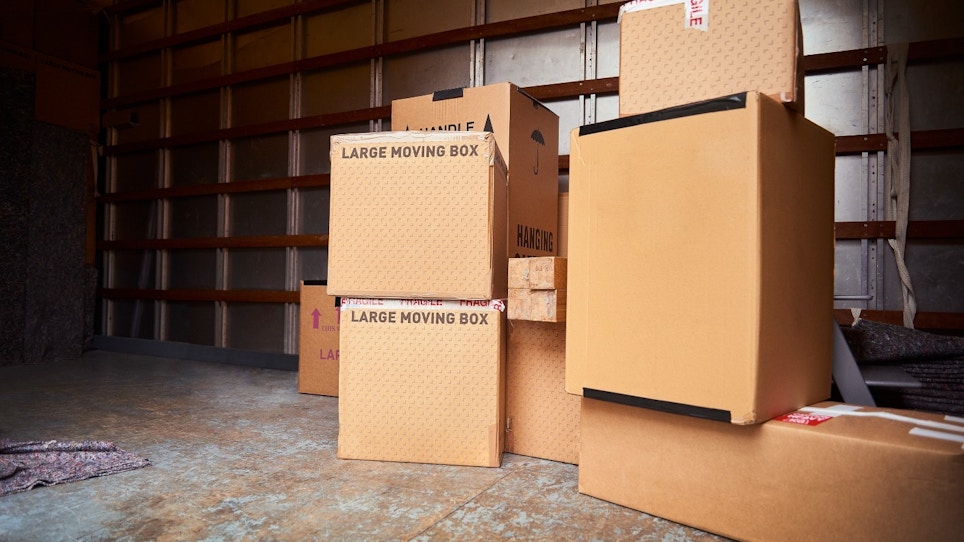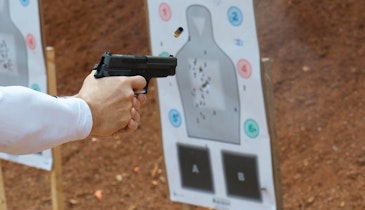Moving. The decision to move can offer rewards and breath new life into a stagnant or declining business. Yet, a relocation can also be a real strain on time, employees, owners, vendors and resources. Trust me: I moved my household four times in one year, including moving 42 yards across the street to a just-finished condo because the condo I was currently renting while my new home was being built, was sold. Ugh. But in the end, I was so glad I moved.
Most businesses begin success by selecting a site for operating, serving customers and receiving goods that are sold. Everything at that location, from the parking lot and street front to the showroom floor and warehouse space inside, all lead to business successes — and can also be the source of many failures. In recent times, major firearms manufacturers have pulled up roots and moved, including Weatherby, Beretta, Remington, Kahr and others. Ruger, among others, has opened manufacturing facilities away from anti-gun states like Massachusetts and Connecticut. Ruger now has a manufacturing plant in eastern North Carolina. Moving solves problems.
Moving can provide lower property or inventory taxes, better labor and a wider group of employees, business incentives and other things. Moving to another location, city, region or state can possibly increase your employee and customer base, reduce operating expenses and offer a wide range of other benefits, along with increased profits. Moving can often also provide benefits that outweigh the relocation costs.
When making a decision to move, first look at trends in your current location, such as reduced traffic on the street out front, moves by other local businesses, and out-of-your-control situations such as increased crimes, rioting and burning (more common now), declines in the local neighborhood and other factors that add to or detract from your business. Much like many things in the hunting and shooting sports industries, customer preferences and business operating environments all are subject to changes. Look around and recognize changes before they kill your business.
Unfortunately, some of those changes are detrimental to business operations if you sell firearms and hunting gear. Relocating to a better location can provide a much brighter future. Are you needing to relocate?
Writing Is on the Wall
Relocating a business is a huge decision. Take your time, study the pros and cons, make a checklist, and calculate the costs and the potential profits in a new location. Factors to consider that trigger a move can include: street changes by the county or city that make customer arrivals more difficult, local nuisance ordinances that will increase red tape for you and drive customers elsewhere, new housing developments going in around outdoor gun ranges, and the list goes on and on. Some businesses have also relocated because of advertising/sign restrictions and red-tape permits for events that are held outside. Newly passed local, state and federal regulations have consequences, and businesses frequently move to escape these obstacles.
A new threat in today’s world is being targeted by vandals, riots, looters, constantly trashed parking lots, vehicle break-ins while the business is open, and other petty crimes that take their toll. Maybe you realize the neighborhood you are in has changed, and your customers will not feel safe coming here. Local law enforcement offices and some online realtor websites provide details about neighborhoods and streets. Research the numbers and assess the possible damage to your business.
Other factors that trigger a move can include an outdated building or reduced parking lot size because of widened streets or other factors. This also often happens in strip-mall locations that continually change owners and increase in per-square-foot rental rates while constantly needing upgrades. Renting vs. owning and the associated dollars should also be calculated into move decisions.
One major factor around a move is employees, if you have them. Great, dependable and dedicated employees are a challenge to find anywhere, and more so in today’s economy. It can be a challenge to keep your current employee team if you move. As you begin weighing a move, discuss the topic with employees and listen to their feedback. Their insight can influence your decision to move. If the employees are in favor of relocating, you’ve met one major hurdle and can move (pun intended) ahead. If your move is local and in the same town, you could have employees with shorter drive times in the new location — or not. Same goes for you, because as an owner, your time to reach the place that provides your income should be studied in the decision process. Drive time costs, while your time inside your business should be producing income.
Moving has many levels and influences so make this decision carefully.
Move On!
If you have made the decision to relocate your business, you need a master plan and well-developed schedule to make the move a success. First, get out a calendar and start noting dates and deadlines. You need to work with utility companies, vendors and suppliers, affected employees and a wide range of other vested interests. Loading safes into trucks, moving bulky items like shelves and counters, and moving things like a refrigerator from the break room are not one-man or one-woman jobs. Plan to pack and move the small stuff like banners, wall clocks, the cash register, important papers and other items. Many relocating companies and businesses know to hire movers to move the big stuff. Let them do the heavy lifting, but be certain the company has experience moving a business or company.
Since your business probably has firearms in its inventory, I suggest moving all of those yourself, along with any optics, knives and ammunition. In fact, some moving companies will not touch firearms and ammunition. Ask if you want the company to handle these items — and get mover’s insurance.
Then there are customers who get involved indirectly in any business relocation. Let current customers know you are relocating and where you are going. Next, plan ahead and advertise when the doors will be open at the new location. Many relocated retail businesses do a soft opening a week or so ahead of the Grand Opening to work out any kinks and to be certain things are in order. This includes internet services and all acts of transactions.
To make the new location more profitable, create a showstopper interior and inviting entrance, along with inviting curb appeal. Current customers who drive to visit and shop at the new location need to see and experience improvements — wow them and they will return with new customers. Strive to make everything fresh and inviting. Here is money well spent as you start a new chapter in your business plan. Make a big deal out of the big deal!
Pulling More Customers
As you begin business in the new location, strive to spread the word. Signage, such as billboards, in the region should include the location address and possibly your website, and they should show sought-after gear, like leading brands of hunting rifles, ammunition or optics. Remember to apply for co-op advertising dollars in these efforts to spread the word about your new location. Also work with designers to be certain the billboard, print ad or brochures convey the right message and visually invite customers. Since around 95% of America’s hunting market pursues deer, a big buck image could be the first item to draw attention.
Before you make the move is the time also to look for incentives from cities and counties, plus grants from local economic development councils. There are dollars out there related to new businesses moving in, so discover these and add them into your moving costs if they become available. Be creative online, at the old and new locations and through regional newspapers and dependable news as you close and reopen. If there’s a local chamber of commerce, contact them about numbers, trends, and assistance.
In the new location, you want to work to make customers feel welcome and create that “I like shopping here” feel. Stunning taxidermy on the walls, hunting murals or artwork, and other things that are visually stimulating get customers excited. This can set the mood for shopping — and spending.
By the Numbers
In your search for a new location, remember to discover and study all the numbers around a new location. This could include drive-by vehicle traffic numbers from street department, crime statistics from the local police, and more. Then visit the site multiple times at different times of day (including peak drive times) and on weekends. While cities and regional governments work to attract businesses, they sometimes overlook revealing numbers that can affect a business, especially one in the hunting business that sells firearms. Do your research thoroughly.
Finally, look at your inventory, business plan, last five years’ profits and losses, and other numbers. Then project numbers in the new location you are considering. If you can recover the costs associated with relocating in the first year, and then increase profits afterward, moving is a no-brainer.
Another positive about moving is that employees and customers get excited about new stores, new layouts on the show floor, and everything new. Keep this in mind as you close one front door and open another. What will you be glad to leave behind and what will the new location provide?
Relocation could be a new beginning and lifesaver for a business. Is it time for you to move?






